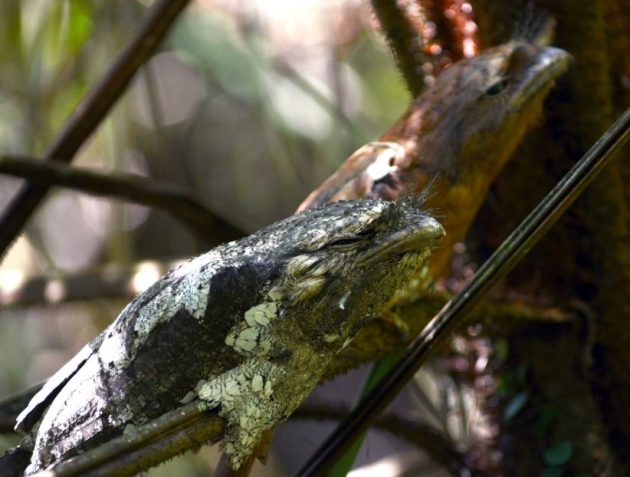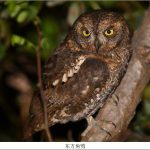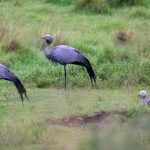
After my recent post on my 12 favourite species in South Africa, I decided to turn to Sri Lanka, where I lived after most of my youth in South Africa. As this country is way smaller than South Africa and I also did not live there for as many years, I thought it would be easier to limit myself to 10 species. This expected ease turned out to be treacherously false, but in the end I fortunately managed to limit myself to 10 species.
Serendip Scops-Owl
I think it’s a coincidence that it’s again an owl occupying the first place on this list, but no coincidence that it appears on this list alltogether. This bird is probably objectively the coolest bird of Sri Lanka not only because its stunning appearance but also because it was only described to science in 2004 – just 15 years before I first saw it! It also has one of the most beautiful names of all scops-owls.

Sri Lanka Thrush
This bird had to be here because I had long wanted to see all endemics in the country. At the same time, living in a place rather than visiting as a tourist means that there is much less pressure to reach such a target. This made me rather too laid-back than I should’ve been to reach my target. I only saw it the Sri Lanka Thrush few weeks before I moved out of the country for good.

Red-backed Flameback
This was a garden bird in Colombo and is surely one of the most stunning woodpeckers out there (okay, I don’t want to think about this statement too much before I recall Great Slaty, Heart-spotted, Southern Ground, etc., etc.). I will never forget its glowing crimson back as it perched on the palm trunks around our house.

Crimson-fronted Barbet
I love the colourful barbets of South and Southeast Asia, and this bird is no exception. An endemic to Sri Lanka, this is probably the most colourful barbet of the island. This bird was fairly regular in our neighbourhood (though not as common as the Brown-headed Barbet), and during the COVID-19 lockdowns I spent a few days watching a pair at a nest, and a chick eventually fledging, close to my home. Being able to accompany this process was one of my many memorable birding moments in Sri Lanka.

Stork-billed Kingfisher
This bird kicked out Painted Francolin in the last minute, reason being that I’ve seen it much more frequently (the francolin only twice) and that it’s simply a more unusual bird than the francolin, which was more in the race for its rarity in Sri Lanka. The absolutely massive bill of the Stork-billed Kingfisher is very impressive, but its bright blue back is also exceptionally beautiful, being just like the blue flash of a flying Common Kingfisher, only like five of those tied together.

Common Hawk-Cuckoo
This is the only species in the list I’ve never seen, although I have literally stood under the tree from where it was calling a handful of times. Not only that, but a friend of mine who’s more of a casual birdwatcher has seen it multiple times. These are surely two criteria for a true bogey/nemesis bird. As a cuckoo, it is also a very cool species and I look forward to eventually seeing this beast.

Indian Pitta
Wherever they occur, I think it should be obligatory that pittas feature on a list such as this one. Hence, while the inclusion of the Indian Pitta is well-deserved, this species does not compare to some of the absolutely dramatic representatives of this group, such as the African Pitta which I’ve seen in Zimbabwe or my favourite of all, the Malayan Banded Pitta. I’ve seen it near my house, in the highlands, and in the northern lowlands, but am still always eager to see it again.

Ruddy-breasted Crake
I’ve had several nice encounters with this species, which is rather surprising as the word crake usually implies some impossibly elusive beast calling from dense reeds. In fact, I coincidentally came across a group of birders (including a teacher from my school) in one of my first weeks in the country, in a urban wetland close to my home, who were watching this bird. The crake stayed for quite a while, giving me several good views. I really love crakes, and any quality crake sighting is therefore always a highlight.

Sri Lanka Blue Magpie
An endemic of Sri Lanka, this species is a classic bird of the Sinharaja forest. It also typically greets visitors at the entrance to the forest, making it a bird I connect with all my visits to this legendary forest. They are relatively approachable, but unfortunately conditions have never been sufficient for a really good photo.

Sri Lanka Frogmouth
This species is endemic to Sri Lanka and the Western Ghats, where it occurs in forests but is usually only seen roosting by day in the densest of tangles within the undergrowth. Another typical species in Sinharaja, the local guides are usually able to locate a roosting pair in swampy areas with tree ferns in the forest.

Having cut down the list to 10 makes me even more eager to see all the species that did not make it. However, I equally look forward to returning to Sri Lanka to see all of these species again (and finally nail down the hawk-cuckoo!). There is also a very good collection of shorebird species to be found on the island (including Crab Plover), which makes a winter visit particularly worthwhile. I did not want to add waders on this list as they are not unique to Sri Lanka, but watching plovers, stints, and other waders along the northern coasts is another birding highlight on the island for me.











Great list, and a great incentive to go there soon, at least for me. Thanks, Luca!
Thanks for sharing as one cannot see so many birds in one lifetime! We can discover and see it through your experience and eyes.
I particularly like the Thrush with its camouflage plumage. I guess you can only detect it when it moves on the ground.
Excellent list, and yes – any crake is a good crake!